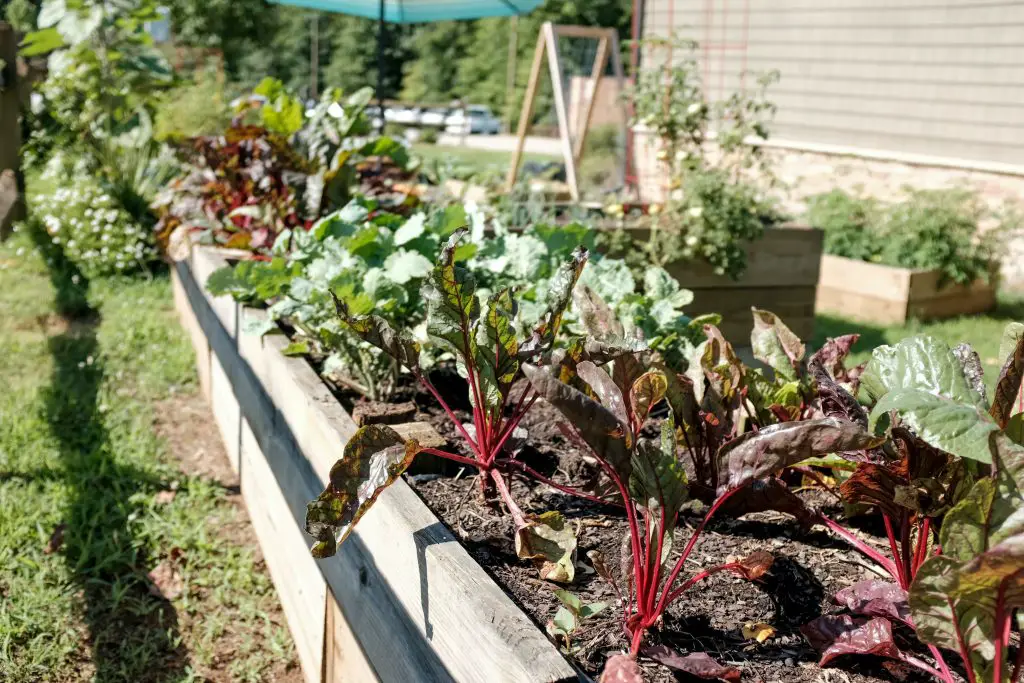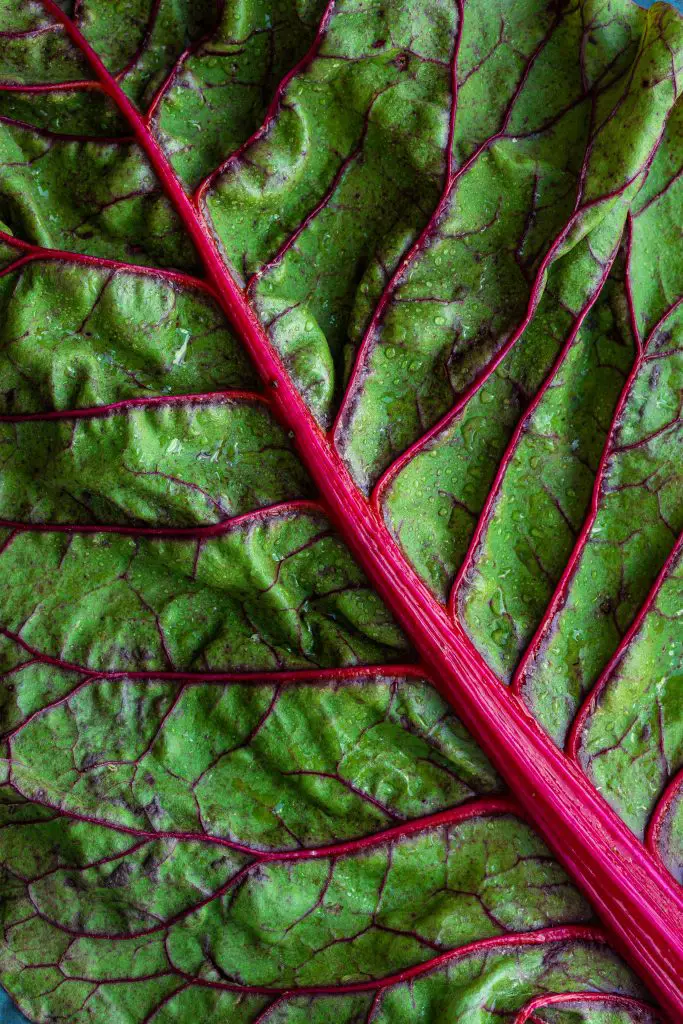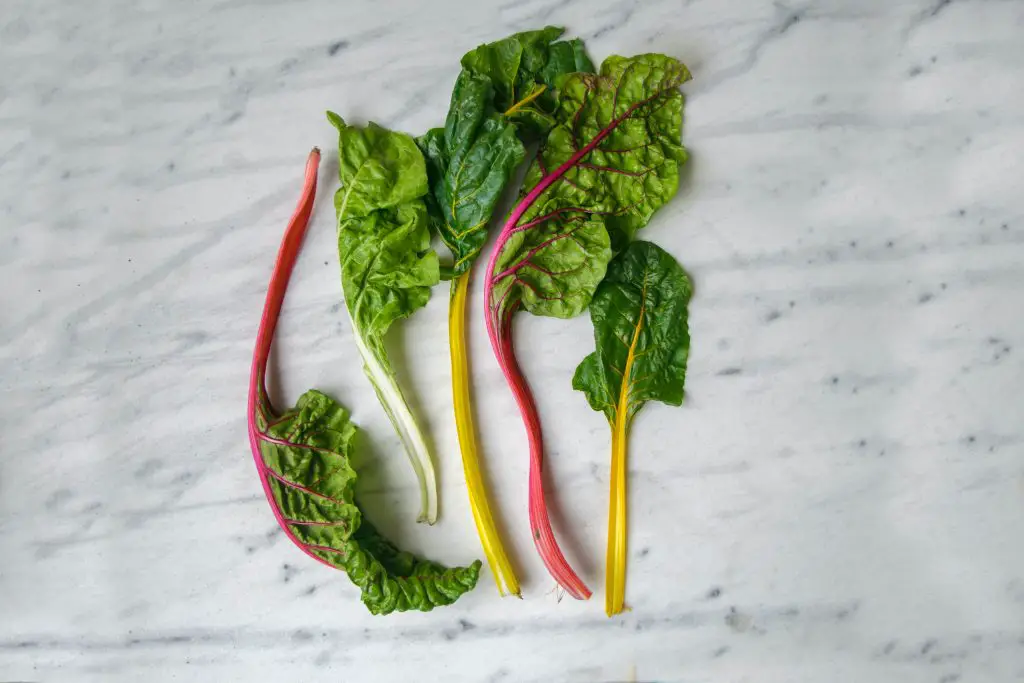Is Chard The Same As Silverbeet? Chard is an extremely popular leafy green that is grown widely in vegetable gardens around the world, however, the vegetable also looks extremely similar to silverbeet so the question is silverbeet and chard a different name for the same vegetable?
The plant known as silverbeet is sometimes referred to as chard however not all chard is silverbeet. Chard and silverbeet are the same species, Beta vulgaris, however, the name silverbeet generally refers to varieties that have white storks, whereas chard refers to any variety of that particular plant irrespective of the color of the stork.
The color of the storks that can be obtained include white, pink, green, orange and red and many seed suppliers sell a range of these varieties under the commercial name rainbow chard which typically contains varieties with shades of pink, orange, and red. Buying rainbow chard is a terrific way to get a range of different varieties from a single seed packet which provides greater variety in your garden.
Chard and silverbeet are also referred to as sea kale, swiss chard, perpetual spinach, and beet greens. The name beet greens comes from the fact that these plants are closely related to beetroot and sugar beets which are grown for their roots.

Is Silverbeet Worth Growing?
Silverbeet would have to be one of the highest yielding leafy greens you can possibly grow in your garden. It produces masses of leaves over an extremely long time and you can reasonably expect to get yields of around about 6 pounds per plant which is significantly larger than any other leafy green that I can think of.
Additionally, the plants will produce leaves year-round in climates that have relatively mild winters. This is because the plant is a biennial which means that you can plant it in early spring and harvest the plant for close to 12 months before the plant goes to seed the following year.
If you compare this to other leafy greens such as spinach or even lettuce you will find that these plants will produce significantly less harvest, in some cases up to 5 times less, and these plants have significant limitations on when they can be grown and how long they last.
Spinach for example will grow only in the cooler months because once the weather warms up the plant quickly goes to seed making the leaves inedible. Similarly, lettuce plants will also quickly bolt if the weather warms up and becomes bitter and inedible. This means that seeds need to be planted extremely regularly to ensure a constant supply.
So in short this is one of the first plants that I would include every year in my garden.

How To Grow Silverbeet
Silverbeet is a relatively easy plant to grow with most gardeners planting seeds in early spring or even late winter. At this time of the year, the seeds need to be grown indoors in seed trays, however, it is also possible to plant the seeds directly in the garden.
To ensure a continuous supply it is best to start the seeds indoors in a seed tray. To plant the seeds start by filling a seed tray with a good quality seed raising mix and firming the mixture into each individual cell to create a solid plug. This is advantageous because it makes it easier to transplant the seedlings later on because it reduces the level of root disturbance which helps to accelerate the rate of growth.
As the seeds are relatively large they are usually planted at a depth of approximately 1 inch with two seeds going into each cell. This is done to ensure that at least one of the seed germinates in every cell to make the most of your indoor growing space. The seed tray should then be placed in a relatively warm location that gets adequate light.
Typically, seedlings will take approximately 7 to 10 days to appear depending on the conditions in which the seeds are grown and they will need to spend approximately 4 to 6 weeks in the seed tray before they can be transplanted into the garden.
At this point in time, the seedlings will typically be 2 to 3 inches tall and ideally should only be planted out in the garden once all risk of frost has passed as this will accelerate the rate of growth significantly.

How To Transplant Seedlings
When the seedlings are large enough to be planted out into the garden they should ideally be planted in a location that gets between 6 to 8 hours of sun per day however chard is a plant that will tolerate shadier conditions but the rate of growth will be slower.
The seedlings should ideally be placed approximately 10 inches apart in a garden bed that has rich, moist, and free-draining soil with plenty of nutrients. If the soil is somewhat impoverished then it may be necessary to add a bag of compost to the soil before planting the seedlings into the garden.
Once the seedlings are in position the next important step is to apply a layer of mulch that is approximately 2 to 4 inches thick around the seedlings. This will help to suppress weeds and retain additional moisture in the soil.
In addition to applying the mulch, it is also important to put some snail bait around the plants as they can be susceptible to attack early on when they are relatively small. However, after a few weeks once the plants are 6 to 10 inches tall slugs are not such a problem.

Harvesting Silverbeet
The plants can be harvested at any stage, however, the reality is that until the plant reaches a reasonable size it is difficult to remove leaves without affecting its growth significantly. As a general rule, it is best to wait until the plant is somewhere between 6 and 10 inches tall which usually means that it is starting to produce decent sized leaves in reasonable numbers.
When harvesting from the plant it is best to remove the outer leaves first as this will leave the inner leaves which will generally be younger to continue to grow, This will mean it will recover relatively quickly allowing an increased frequency of harvest.
If you use a lot of silverbeet is best to have a few plants in the garden so that there is always some leaves available for you to pick if you need them.
I hope you found this article useful and have great success growing silverbeet or chard at home in your own garden. If you have any additional comments or questions please leave them in the section below.
Relevant Articles
How Much Does A Swiss Chard Plant Produce? It’s More Than You Think!!
Does Silverbeet Need Full Sun?
Is Chard A Brassica? If Not What Is It?
